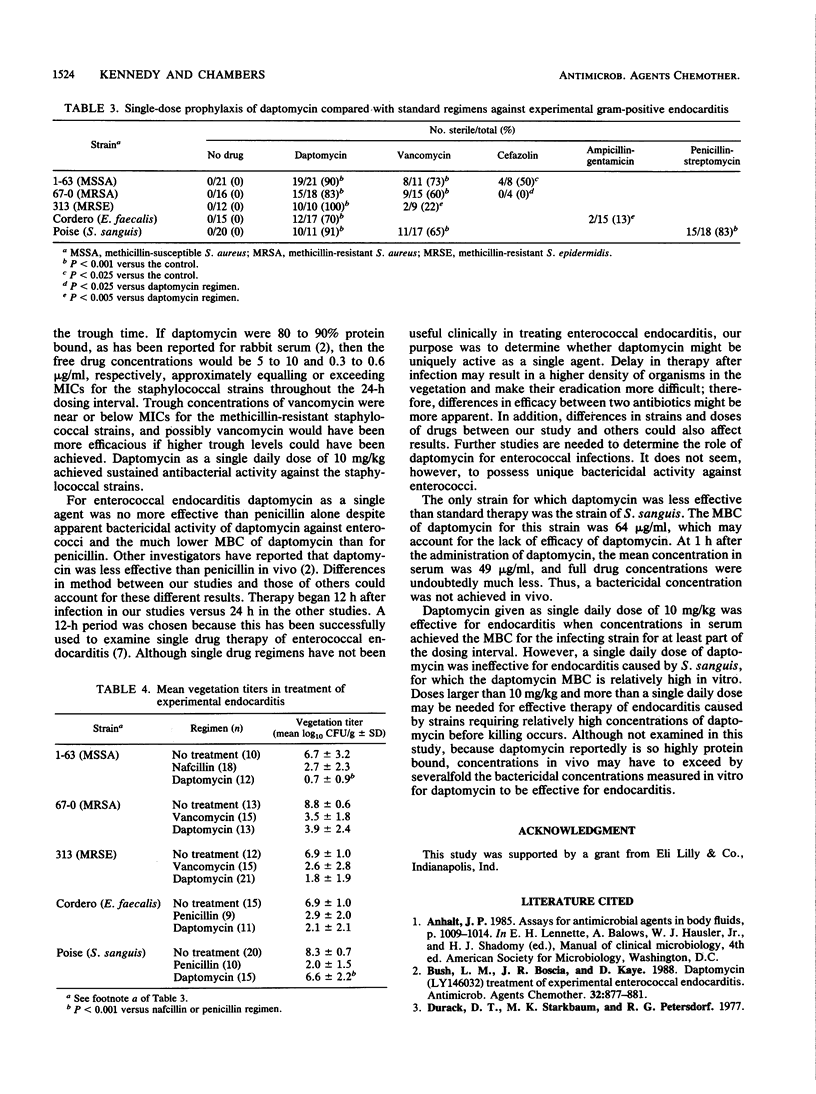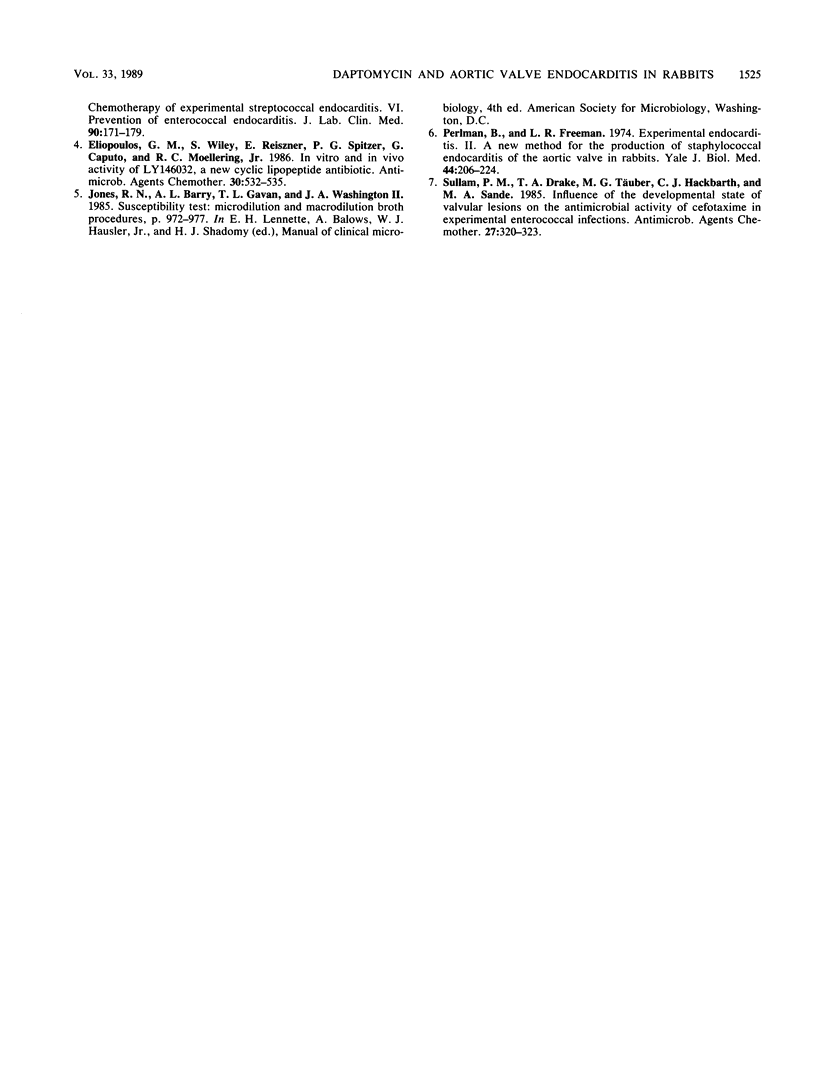Abstract
The efficacy of daptomycin (LY146032), a vancomycinlike lipopeptide antibiotic, was compared with that of antibiotics commonly in use for prevention and treatment of experimental aortic valve endocarditis in rabbits. Strains of Staphylococcus aureus. S. epidermidis, Streptococcus sanguis, and Enterococcus faecalis were used to establish endocarditis. A single 10-mg/kg dose of daptomycin and a single 25-mg/kg dose of vancomycin were both effective in prevention of endocarditis produced by strains of S. aureus and S. sanguis. Daptomycin was more effective than vancomycin for prevention of endocarditis caused by the strain of S. epidermidis. A single dose of daptomycin also was more effective in prevention of staphylococcal and enterococcal endocarditis than were single-dose regimens of cefazolin (100 mg/kg) and the combination of ampicillin (30 mg/kg) plus gentamicin (3 mg/kg), respectively. For treatment of endocarditis, daptomycin (10 mg/kg) as a single daily dose was as effective as regimens of either vancomycin or beta-lactam antibiotics for staphylococcal and enterococcal endocarditis. Daptomycin, however, was not as effective as a single daily dose of 600,000 U of procaine penicillin for endocarditis caused by the strain of S. sanguis.
Full text
PDF



Selected References
These references are in PubMed. This may not be the complete list of references from this article.
- Bush L. M., Boscia J. A., Kaye D. Daptomycin (LY146032) treatment of experimental enterococcal endocarditis. Antimicrob Agents Chemother. 1988 Jun;32(6):877–881. doi: 10.1128/aac.32.6.877. [DOI] [PMC free article] [PubMed] [Google Scholar]
- Durack D. T., Starkebaum M. K., Petersdorf R. G. Chemotherapy of experimental streptococcal endocarditis. VI. Prevention of enterococcal endocarditis. J Lab Clin Med. 1977 Jul;90(1):171–179. [PubMed] [Google Scholar]
- Eliopoulos G. M., Willey S., Reiszner E., Spitzer P. G., Caputo G., Moellering R. C., Jr In vitro and in vivo activity of LY 146032, a new cyclic lipopeptide antibiotic. Antimicrob Agents Chemother. 1986 Oct;30(4):532–535. doi: 10.1128/aac.30.4.532. [DOI] [PMC free article] [PubMed] [Google Scholar]
- Perlman B. B., Freedman L. R. Experimental endocarditis. II. Staphylococcal infection of the aortic valve following placement of a polyethylene catheter in the left side of the heart. Yale J Biol Med. 1971 Oct;44(2):206–213. [PMC free article] [PubMed] [Google Scholar]
- Sullam P. M., Drake T. A., Täuber M. G., Hackbarth C. J., Sande M. A. Influence of the developmental state of valvular lesions on the antimicrobial activity of cefotaxime in experimental enterococcal infections. Antimicrob Agents Chemother. 1985 Mar;27(3):320–323. doi: 10.1128/aac.27.3.320. [DOI] [PMC free article] [PubMed] [Google Scholar]


